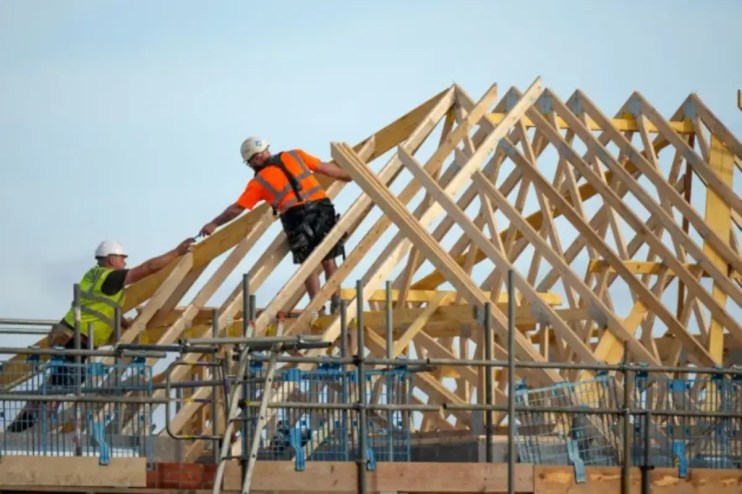Construction sector surges thanks to interest rate cuts and planning reform

Construction activity increased at its fastest pace for nearly two-and-a-half years in September, according to a closely watched survey.
S&P’s purchasing managers’ index (PMI) for the construction sector showed output rising at its fastest pace since April 2022 with the headline index rising to 57.2 in September.
Anything above 50 indicates expansion, meaning the construction sector has now been growing for seven consecutive months. Last month the PMI stood at 53.6.
“UK construction companies indicated a decisive improvement in output growth momentum during September,” Tim Moore, economics director at S&P Global Market Intelligence said.
Elliott Jordan-Doak, senior UK economist at Pantheon Macroeconomics, noted that the improvement was due both to the steady fall in borrowing costs and the government’s focus on “loosening planning rules”.
The survey showed that all three construction sub-sectors recorded growth in September, with civil engineering leading the way at 59.0.
Respondents noted that there was robust demand for renewable energy infrastructure and a “general uplift” in work on major projects.
Housebuilding activity, meanwhile, increased at its fastest pace since March 2022 thanks to rising confidence and “improving market conditions”.

Many analysts pointed out that the construction sector had been given a boost by a supportive government policy.
The new government has pledged to build 1.5m new homes over the course of the parliament, which would return annual housebuilding levels to heights last seen in the 1970s.
Labour has also been much more open to backing green energy projects than the previous government.
Jordan Smith, technical director at Thomas & Adamson, said: “The large rise in civil engineering and interest in renewable infrastructure, in particular – along with the boost to housebuilding – suggest the recovery is broadening out, and that the government’s commitments to investment are translating into real projects”.
Commercial building increased at a fast pace in May, with the index climbing to 55.2. Firms noted that “lower borrowing costs and domestic political stability” had a positive impact on client spending.
The survey also revealed some persistent inflationary pressures, with input prices rising at the steepest pace since May last year.
“Construction companies commented on higher prices paid for a range of raw materials, as well as the pass-through of higher wages by suppliers,” the survey said.